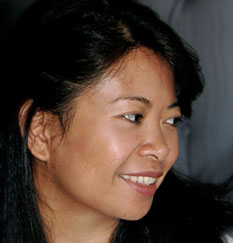Politicizing maps: Zoning project in Brazil exposes challenges of setting boundaries
This is the seventh in a seven-part series highlighting the recent publication of a special issue of the International Forestry Review focused on CIFOR research.
The Brazilian states of Acre and Mato Grosso could not be more different. Acre, a small state situated at the westernmost point of the country is tucked deep into the Brazilian Amazon. A lack of major roads makes it notoriously hard to reach. “There is a joke among Brazilians that Acre doesn’t exist,” said Jazmín Gonzales Tovar, a researcher with the Center for International Forestry Research (CIFOR). “It’s so geographically isolated.”
Mato Grosso, on the other hand, is located near the middle of the country and is the third largest state. Although most of Mato Grosso — which means “thick brush” in Portuguese — is dominated by the Amazon, its capital Cuiabá is a metropolis and a busy travel hub. Moreover, the state is considered the Brazilian capital of agribusiness.
When these two states set out to map and plan their territories, they used the same national regulations and processes. Both followed a federal requirement to use a multi-stakeholder forum (MSF) for territorial planning. The objective: to produce a map that divides the state into land-use categories, to guide land uses and promote sustainability in the territory.
The same territorial planning mechanism led to vastly different processes and results, with Acre accomplishing the project from 1999 to 2007 and Mato Grosso completing a map, but still struggling to get it approved after almost two decades.
To understand what went wrong and what worked, Gonzales Tovar spent time in Acre and Mato Grosso from 2016 to 2018 to study these two cases. In her study, published recently in the International Forestry Review, she reveals how political, social and economic elites can nudge territorial planning processes into echoing their own agendas.

A map isn’t just a map
Brazil’s military government mapped the country’s Amazon region between the 1970s and the 1980s with no civil society participation. However, the country’s transition to democracy in the late 1980s, and international pressure to reduce deforestation in the Amazon led to regulations on Ecological-Economic Zoning (ZEE, in Portuguese) from the 1990s.
ZEEs were introduced as a policy tool to organize territories and guide decision-making toward sustainable and inclusive land use. Regulations called for ZEEs to be developed and implemented through participatory means such as a multi-stakeholder commission.
Gonzales Tovar’s study confirms that territorial planning and map making are not purely technical endeavors. “People often think it is as straightforward as getting data, then building maps” she said. “But territorial planning MSFs are highly political spaces, so maps aren’t a hundred percent technical.” In fact, she warns, “information considered as technical could be a way to disregard the priorities of certain groups and different lived realities.”
Considering the political nature of multi-stakeholder territorial planning, Gonzales Tovar examined how the composition and character of Acre’s and Mato Gross’s MSFs impacted their ZEEs.
Acre’s history of forest conservation produces a dream map
Acre’s location and isolation from the rest of Brazil has shaped the state’s history, goals and politics. Between the late 1970s and 1980s, the state’s Indigenous Peoples and other forest-dependent populations and grassroots groups resisted invasions, protected the forest and regularized their land rights.
These processes also slowed the expansion of agroindustry in the state. As a result, Acre has well-conserved forest areas and established indigenous lands and conservation units. In Acre, Indigenous and local peoples were able to rely on forest resources for their livelihoods. “Acre has retained about 90 percent of its forests,” Gonzales Tovar said.
Since the late 1990s, Acre’s politics have been steeped in the ideal of florestania, a local term for forest-citizenship. Acre’s government envisioned its ZEE map as a dream map promoting florestania and forest-based sustainable development as part of a social pact to overcome past conflicts and recognize the rights of historically marginalized peoples by giving all land-use actors an equal voice in building a common future vision.
Its ZEE commission was composed of the state and federal government, research agencies, small-scale workers’ or farmers’ organizations, business, indigenous organizations and non-governmental organizations (NGOs).
Acre’s government and diverse stakeholders fully supported the ZEE and florestania-oriented politics. Gonzales Tovar’s interviews revealed that most members of the commission had good relations with each other; most did not feel threatened by the government experts’ technical knowledge and considered them as collaborators. However, the state’s agribusiness federation considered the commission’s organizers to be biased towards environmental protection.
Acre’s ZEE commission produced a map that reflected florestania: it forbade further deforestation or agricultural expansion and called for its forests, land uses, land occupation, economic activities, and populations to remain as they were. Following approval by the commission and by state-and federal-level authorities, Acre’s map became law.














